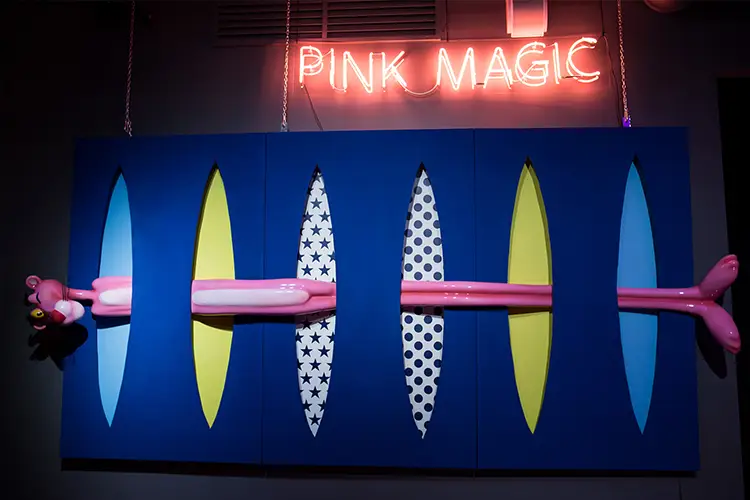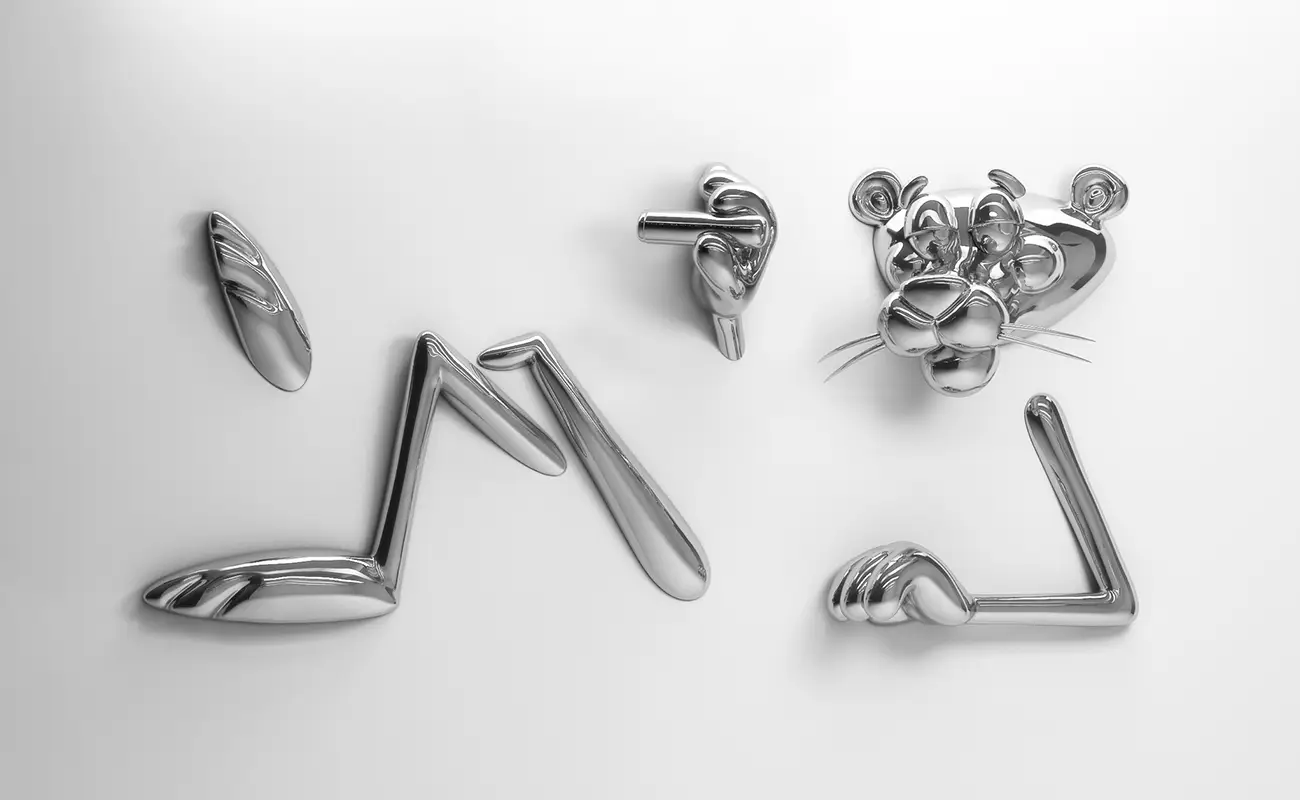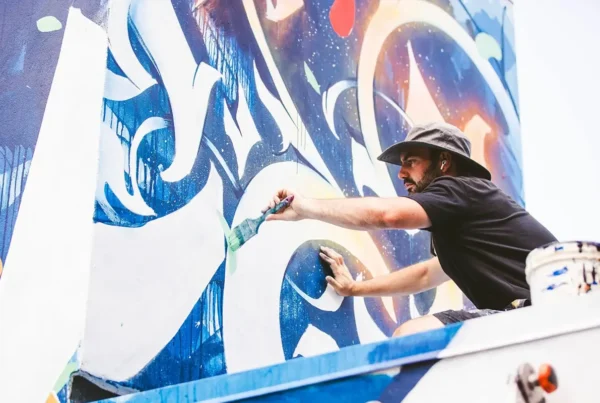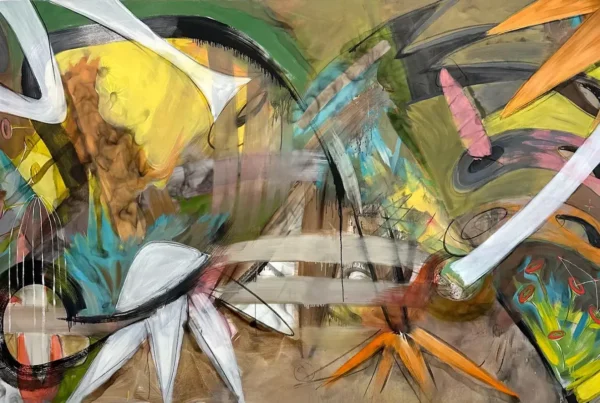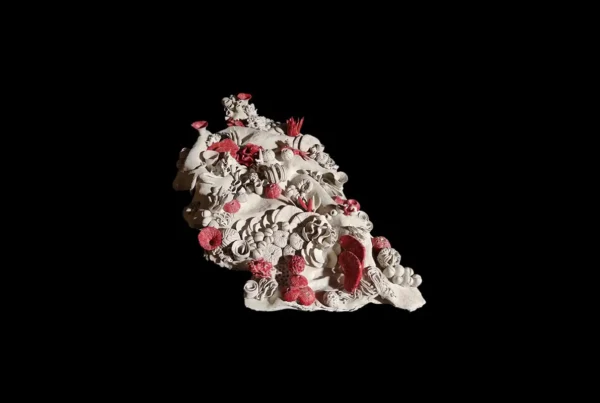“In my work, I like to play with recognizable images and products of consumerism, giving them a second meaning.”
The Collision of Icons and Insight
Olga Lomaka’s work commands attention through a visual language rooted in pop culture, yet layered with conceptual nuance. Identifying as a pop artist, she transforms the familiar into something subtly unsettling, often borrowing the polished gloss of consumerist imagery to mask deeper philosophical themes. Her creative lens fuses humour with critical reflection, crafting pieces that might elicit amusement at first glance but invite contemplation upon closer inspection. Characters such as the Pink Panther, rendered in chrome and placed within contexts far removed from their original narratives, become reflective vessels—both literally and metaphorically—for societal desires and anxieties.
Born in Russia and currently working from London, Lomaka’s international upbringing threads through her art, establishing a dialogue between Eastern introspection and Western materialism. Her early life in post-Soviet Russia, followed by academic and cultural immersion in the United States and the UK, has shaped an aesthetic that thrives on contradiction. This dual perspective allows her to critique consumerism from a uniquely positioned vantage point, neither fully inside nor outside its grasp. Her art resists passive consumption, constantly nudging viewers to question what lies beneath glossy surfaces.
Lomaka’s exploration of metaphysics, spirituality, and identity provides a counterbalance to her vibrant and saturated palette. Despite their exuberant appearance, her works are not mere celebrations of pop iconography; they seek to expose the illusions embedded in modern visual culture. The “Through Time and Space” series exemplifies this ethos by elevating a cartoon figure into an object of near-sacred contemplation, challenging the viewer to reconcile the absurd with the profound. Her practice is a study in contrasts—bright yet reflective, whimsical yet urgent—illuminating the complexity of existence through the mirror of mass culture.
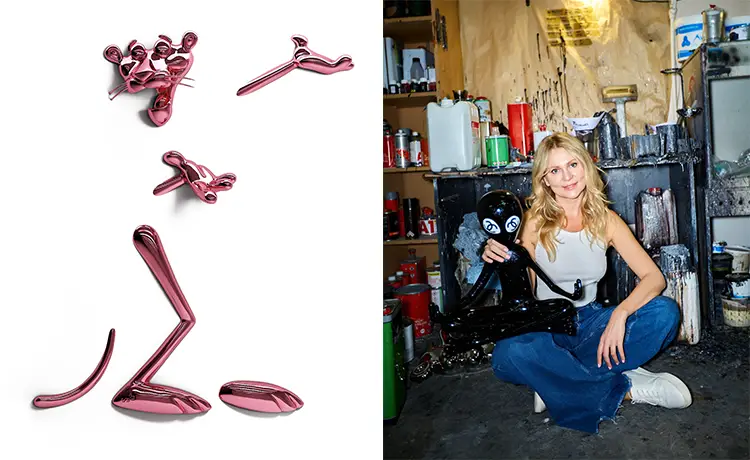
Olga Lomaka: From Pencil to Pop Philosophy
Art has been a lifelong companion for Lomaka, not merely as a profession but as a personal compass. From a young age, she found solace in drawing, often preferring sketching over childhood distractions like television or play. Encouraged by her parents, she attended an art school for children, where she first discovered the emotional sanctuary and expressive freedom that art could offer. For many years, however, her creative energy remained a private pursuit—an emotional outlet rather than a professional ambition. That shifted during her university years in the United States, where she studied Business Administration. Enrolling in painting courses at Loyola University Chicago led to a pivotal realization: art was no longer a hobby but a necessity, a healing practice that answered her deeper search for purpose.
With this new clarity, she began building a career from the ground up. Initially participating in group shows and art fairs, she developed her voice slowly but deliberately. Her creative process became a form of self-discovery, each piece pushing her further into questions of identity, culture, and existential meaning. The turning point came when she relocated to London, determined to formalize her commitment to the visual arts. She completed a BA (Hons) in Painting at Camberwell College of Arts in 2015, after earlier studies at Central Saint Martins, and pursued art-business training at Sotheby’s Institute of Art. These formative years grounded her vision and provided the platform for her current success.
Establishing herself in the competitive contemporary art world was not merely a matter of skill—it required perseverance, networking, and a clear artistic identity. Lomaka emphasizes the importance of continuous learning, not only through formal education but also through residencies, mentorship, and active engagement with the art community. Her journey underscores that artistic success is not linear; it involves both introspection and public engagement. Through exhibitions, connections with collectors, and a growing presence in prominent art events, she has cultivated a career that balances personal evolution with global visibility.
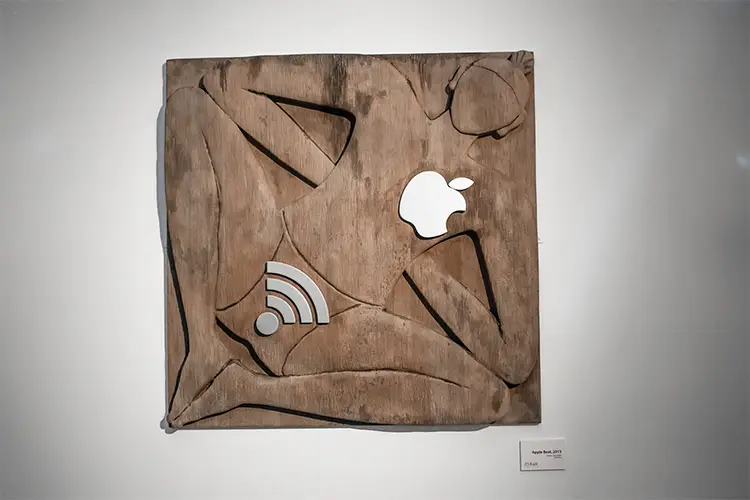
Subversive Symbols and Reflections of the Self
Lomaka’s signature style fuses pop art’s visual immediacy with symbolic and surreal undertones, challenging the viewer’s perception of reality. Her aesthetic blends bold colours, sleek surfaces, and sculptural forms—often utilizing materials such as resin, metal, and chrome finishes. These high-gloss mediums reflect not just light but the viewer themselves, turning each piece into an active dialogue between object and observer. Logos, cartoon bodies, and commercial icons populate her visual vocabulary, but their purpose extends beyond nostalgia. They serve as metaphors for contemporary life’s contradictions, highlighting the absurdity of idolizing surface-level beauty and consumer status.
One of her recurring concerns is the critique of materialism and the societal emphasis on image over substance. By integrating recognizable branding and pop references into her sculptures and paintings, she reframes these symbols to question their cultural significance. What appears cheerful and decorative often holds a critical edge, revealing emptiness beneath the veneer of glamour. In this way, Lomaka uses the language of advertising and fashion to reflect back the illusions we internalize daily. Her works act like cultural X-rays, exposing the often-unseen fractures in our collective psyche.
Yet beneath this critique lies a deeper spiritual inquiry. Influenced by Eastern philosophy, mysticism, and consciousness studies, Lomaka frequently incorporates metaphysical themes into her art. The use of mirrors and glossy finishes is not just aesthetic—it prompts introspection, asking viewers to confront their own identity and presence. Her works blur the boundaries between real and artificial, presence and absence, inviting contemplation on the nature of reality itself. By fusing the pop-cultural with the philosophical, she creates art that oscillates between the external and the internal, the trivial and the timeless.
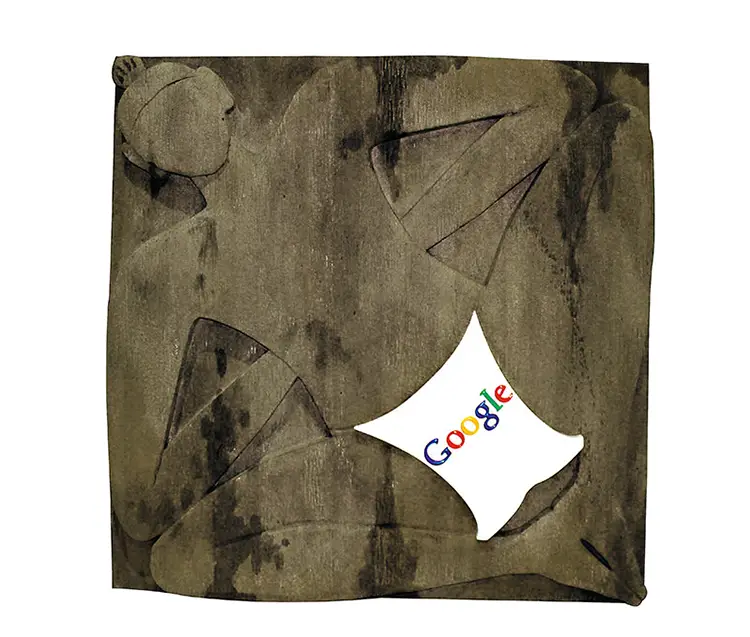
Olga Lomaka: A Future in Monumental Contrasts
In her creative sanctuary, Lomaka cultivates an atmosphere that fosters both focus and freedom. Natural light is essential in her studio, aiding in accurate colour perception and creating a serene workspace. Complemented by adjustable daylight lamps for evening sessions, her environment is meticulously arranged to support visual clarity. An inspiration wall serves as her evolving mood board, filled with images, texts, and conceptual prompts that guide her process. Silence is another vital element. She often speaks to her artworks during creation, treating them as sentient companions in an intimate conversation that bridges material and emotion.
To remain present and resist distraction, Lomaka turns to meditation and personal rituals that help her enter a state of creative flow. She silences her phone and limits external interference, allowing for deep engagement with her practice. This mental clarity becomes the foundation for the intricate balance she maintains between conceptual depth and aesthetic polish. Her workspace is not just a site of production but a meditative ground where thought becomes form and emotion transforms into visual narrative.
Among her most meaningful creations is Infinity, a sculpture from the Pink Magic series that epitomizes her approach. This piece, featuring a reflective Pink Panther figure, gained significant recognition when it was exhibited at the Royal Academy Summer Exhibition curated by Grayson Perry and later at the Venice Biennale. Beyond its institutional success, the work represents a personal milestone, encapsulating her core themes of consumerism, transformation, and identity. It serves as a mirror—both literal and symbolic—of her journey and the evolving questions that drive her.
Lomaka’s aspirations extend far beyond gallery walls. A dream project she envisions involves placing large-scale sculptures in untouched natural landscapes—meadows, forests, coastlines—where vibrant, glossy forms would disrupt yet harmonize with the environment. This proposed intervention would heighten the contrast between human-made spectacle and organic beauty, provoking questions about artificiality, intrusion, and coexistence. Inserting chrome-finished figures into raw nature, she seeks to challenge the viewer’s perception of what belongs and what disturbs. This envisioned series promises to extend her inquiry into new terrains, confronting the paradoxes of modernity not only through symbols but through space itself.
